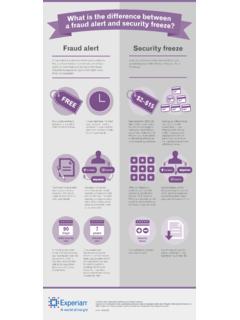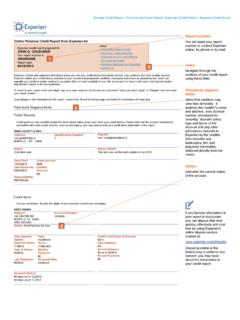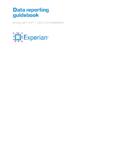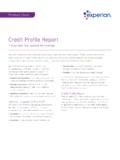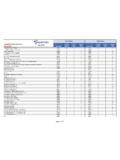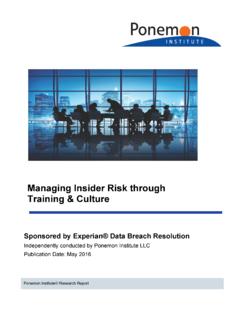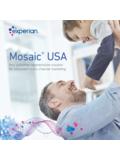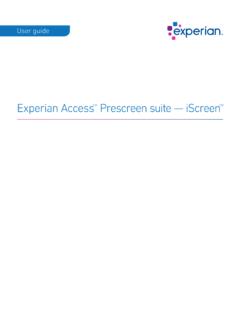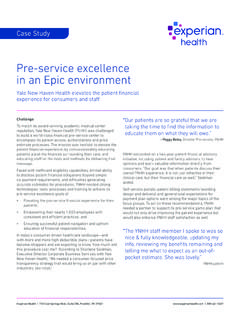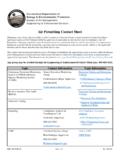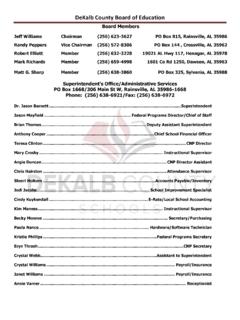Transcription of The revenue cycle, however, is anything but - …
1 Touchless Healthcare is Becoming More PrevalentThe revenue cycle , however , is anything butBy Kassandra KurthKassandra Kurth is Director of Strategic Initiatives for experian has transformed the healthcare industry. From rural America, where in-person doctor visits are dif-ficult, to the farthest reaches of the globe, internet tech-nology allows doctors to visit the sick, diagnose illness, prescribe medicine and even perform surgery without ever actually touching a has transformed the healthcare industry. From rural Amer-ica, where in-person doctor visits are difficult, to the farthest reaches of the globe, internet technology allows doc-tors to visit the sick, diagnose illness, prescribe medicine and even perform surgery without ever actually touching a patient. The recent focus of health-care automation for providers has been on electronic clinical documentation, but providers also have opportunities to automate revenue cycle functions.
2 Identity verification, insurance validation and payment responsibil-ity now demand a disproportionate amount of a medical staff s time. This is true for both specialist care and elective services, in which approval and payment processes require the provider to supply clinical information to the payer prior to treatment. This need for human involvement invariably bogs down the revenue stream. For patients, the overall healthcare experience suffers. Admin-istrative payment uncertainties become a greater concern than the actual treatment. It s difficult for a medical center to predict the extent of insur-ance coverage and the patient s out-of-pocket costs. There are just so many variables impacting projected liability that it s unreasonable for facilities that rely on manual processing to provide estimates. While a facility may have an established book of clinical charges, specific procedures can carry variable costs, which must be verified with the appropriate department.
3 In addition, individual insurance carriers have registration actually became a negative part of the patient experience. revenue CycleEXECUTIVE INSIGHT | by larger hospitals, which have the technical staff needed to support RCM implementation and benefit most from RCM automation. however , recent advances in ease of deployment have led to more individual practices and private physicians offices recog-nizing the benefits as well. Information management companies with legacy workflow, business intelligence and data ana-lytics tools also recognize the overlap between their existing products and the need for comparable tools tailored to healthcare. These providers either have customized established products or partnered with (or acquired) health-care information companies. experian Health s acquisi-tion of Passport Health, for example, ties Passport s well-established RCM technology to experian s established data analytics and revenue -recovery expertise.
4 This powerful combination is expanding RCM to more than 3,000 hospitals and more than 10,000 other medical and ancillary groups across the Integrating RCM Practices are challenged by the need to integrate RCM with their existing workflows and those of partnering providers. Referring doctors, testing labs and a host of insurers each have their own technology. On the back end, credit and collections procedures may carry another set of tools that must be compatible. For many medical professionals or specialty medical facil-ities, this is a major barrier to adopting better platforms. A practice can t stop its current process while it ramps up a new one, and few have a large internal IT staff to complete the task. For this reason, it s important to partner with a skilled integrator to maximize the benefits of a revenue cycle solution.
5 A product integrator can assess the unique workflow and objectives and determine the optimal combination of solutions. Ideally, users will be able to make updates to their existing process to align with RCM products. For specialty medical practic-es such as oncologists or radiologists, each step in the care process carries a measurable cost. Minimizing the time and labor required for each workflow stage translates into better patient care and improved revenue cycles. Each phase - from initial patient identifica-tion, service ordering and scheduling through patient admission and treat-ment, insurance coverage verification, and finally payment collection and archiving - can benefit from a stream-lined process. A comprehensive RCM solu-tion can help providers manage the entire patient continuum from regis-tration through recovery.
6 Tasks such as eligibility and benefit verification can be analyzed in batches or in real time at the point of service, ultimately reducing readmissions. Manual data functions like patient verification and prospective financial responsibility assignment can be streamlined. In addition, risk scoring, preauthoriza-tion and medical necessity evaluation (critical for Medicare eligibility) can be analyzed. Many healthcare delivery or-ganization CIOs resist making changes to revenue cycle management appli-cations at their own peril, cautioned HIM Consultant Melanie A. Meyer, writing for Gartner. CIOs should make investments now to achieve an enterprise view of RCM and deliver these next-generation capabilities. Integrated patient and pay-ment RCM systems, which offer insights from real-time data-handling capabilities and advanced analytics along with competent integration and consultative services, are giving health-care providers greater control over their revenue processes.
7 By leveraging data in beneficial ways, caregivers finally can move away from pushing paper and get back to the business of healing coverage rates and poli-cyholders have varying deductibles, copays and limits that must be consid-ered. The cost-estimation process is so time-consuming - and requires such an abundance of coordination between the physician s plan of care and services provided and the healthcare facility -that many caregivers do not attempt to provide estimates. These concerns are echoed by Lisa Rickey, Patient Access Manager at Brazosport Regional Hospital in Texas. We had three employees working on estimates for scheduled events and never knew how long each would take to produce, she said. Because it was not a seamless part of registration, it actually became a negative part of the patient experience. Another concern is remote access to documents - not just by care-givers, but also by insurance provid-ers, labs and patients themselves - via patient portals.
8 While this is becoming the norm, it introduces the same se-curity vulnerabilities seen in financial transactions. To address these issues, robust revenue cycle management (RCM) solutions are being developed that combine a number of analytical tools similar to those used by the credit in-dustry. Medical document processors are now adopting the same informa-tion-processing and security technolo-gies used in the financial services and credit industries. In fact, RCM is one of the fastest-growing health information segments. A recent article cited no few-er than 83 companies that are staking a claim in this space. These integrated patient infor-mation access, claims management and collections products automate many patient care administrative functions. By leveraging data and analytics, man-ual tasks such as eligibility and benefits verification, preauthorization, medical necessity, and billing and collections can be streamlined, reducing handling and shortening the payment cycle .
9 Initially these systems were revenue cycle 2016, Reprinted with permission from Merion Matters, Publishers of ADVANCE Newsmagazines. ADVANCE Reprints 1-800-355-5627, ext 1484EI | EXECUTIVE INSIGHT
